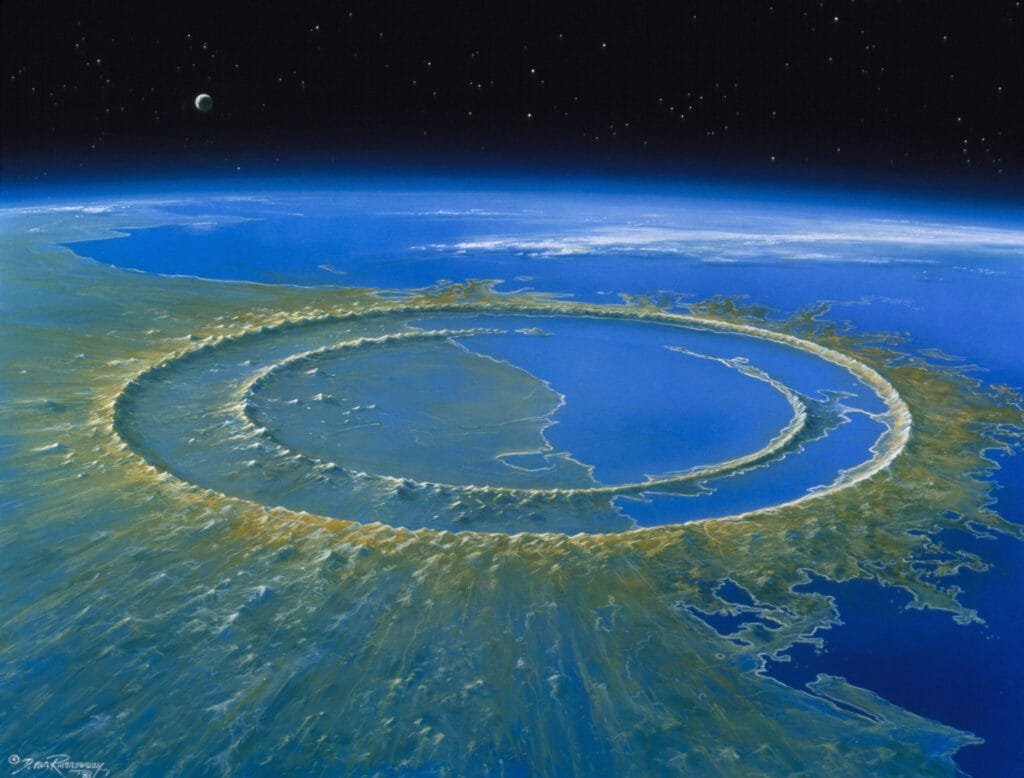Yucatán, Mexico — In a groundbreaking discovery, an international team of micropaleontologists has uncovered a unique ancient marine environment created in the aftermath of the Chicxulub asteroid impact—the catastrophic event that wiped out the dinosaurs and drastically reshaped life on Earth 66 million years ago.
Their findings, published recently in the journal Nature Communications, reveal that the massive collision not only triggered the extinction of approximately 76% of marine species, but also gave rise to a hydrothermal system beneath what is now the Gulf of Mexico, setting the stage for the gradual recovery of Earth’s ocean ecosystems.
A Catastrophic Impact with Unexpected Aftershocks
The Chicxulub asteroid, estimated to be between 10 and 15 kilometers wide, struck the coast of the Yucatán Peninsula with a force equivalent to billions of nuclear bombs. The impact is believed to have generated towering tsunamis, global wildfires, and a “nuclear winter” effect, blocking sunlight for months or even years.
But beneath the devastation, something else was happening.
The immense energy fractured the Earth’s crust, creating deep fissures through which superheated, metal-rich fluids surged from underground. These hydrothermal vents pumped out nutrients and minerals into the newly formed semi-enclosed sea, fostering the rapid growth of bacterial phytoplankton—tiny, photosynthetic organisms crucial to rebuilding the marine food web.
This discovery paints a far more dynamic picture of post-impact life than previously understood, showing that while the surface of the Earth suffered, deep-sea ecosystems may have started healing much earlier.

How Scientists Uncovered the Hidden System
Researchers from Kyushu University in Japan and the University of Zaragoza in Spain made the discovery by studying the isotopic ratios of osmium in ancient marine rocks collected from near the Chicxulub crater. Osmium, a heavy metal, behaves in distinctive ways when hydrothermal systems are active, leaving telltale chemical signatures in rock layers.
“The identification of a hydrothermal vent region was based on the behavior of osmium isotope ratios in rocks from the post-impact period,” the study’s authors explained. The rocks, dating to the first three million years after the asteroid strike, show clear evidence of prolonged hydrothermal activity—a surprise to many scientists who previously thought such systems would have been short-lived.
Why This Discovery Matters
Understanding how marine ecosystems rebounded after one of Earth’s greatest extinction events offers valuable clues for modern science. The team’s findings suggest that hydrothermal systems may play a crucial role in ecosystem recovery after catastrophic events by creating nutrient-rich environments that support microbial life—the foundation of all marine food chains.
Moreover, it raises intriguing possibilities about the origins of life itself. Many scientists theorize that Earth’s earliest life forms may have emerged around similar hydrothermal vents more than four billion years ago.
What’s Next?
The team plans to expand their research by studying rocks from regions farther from the Chicxulub impact site. They hope to determine whether similar hydrothermal systems formed elsewhere and to better understand global patterns of ocean recovery following the disaster.
“We hope to conduct similar studies in more distant regions to clarify global ocean ecosystem recovery patterns and determine the factors that regulated them,” the researchers said.
This discovery not only sheds light on the resilience of life after mass extinction but also reminds us of the delicate balance between catastrophe and renewal in Earth’s history.
Discover more from Riviera Maya News & Events
Subscribe to get the latest posts sent to your email.
